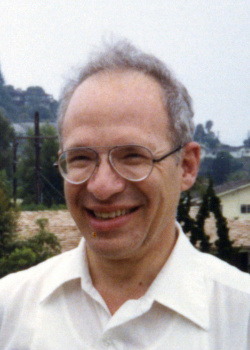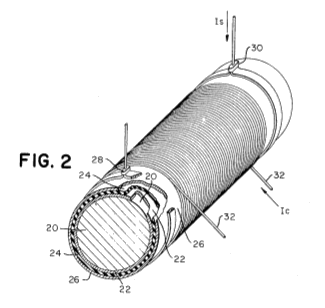Richard Garwin
January 10, 2014
There's an old
joke told among
computer scientists that there are 10 types of people in the world - Those who understand the
binary number system, and those who don't. In another binary way to classify people, as "
hawks," or as "
doves,"
scientists will necessarily fall into one camp or the other.
Linus Pauling, who was awarded a
Nobel Peace Prize to accompany his
Nobel Prize in Chemistry, would fall into the "dove" camp, while
Edward Teller would be a "hawk,"
However, the quality of hawkness/doveness is more like a
continuum between these states, so we can represent people as points in a dove-hawk continuum. In that continuum, I would be placed somewhere to the dove side of the center.
Edward Teller was reviled by many
physicists because of his hawkish ways; but, Teller was
apparently instrumental in the conception of
Ronald Reagan's "
Star Wars" initiative, which had the desirable effect (at least for the
United States) of destabilizing the
Soviet Union. Teller was not alone in advising the US government on
defense strategy. The many past and present scientists of the
JASON advisory group have been doing the same thing since 1960.
I was reminded of the history of the military-academic complex by an
advertisement on page 57 of the November, 2013, issue of
Physics Today. The ad was an announcement of a "
crowdfunding" effort to support creation of a
biography of physicist,
Richard Garwin. The ad describes Garwin as a
"...major contributor to many scientific and engineering disciplines, designer of the first thermonuclear device, national security advisor to the US government for over half a century, and arms control advocate for much of that time."
As can be seen from this one sentence summary, Garwin has worked within a broad range of the hawk-dove continuum.

Richard Garwin in 1980.
Enrico Fermi was Garwin's Ph.D. advisor at the University of Chicago.
Marvin L. Goldberger, another of Enrico Fermi's students and later a director of the Institute for Advanced Study, said that Fermi thought that Garwin "was the only true genius he had ever met."[1]
(Photo by A.T. Service, via Wikimedia Commons.)
Born in
Cleveland, Ohio, in 1928, Garwin received his
B.S. in
Physics in 1947 from nearby Case Institute of Technology (now,
Case Western Reserve University); then, his
M.S. (1948) and Physics
Ph.D. (1949) under the direction of
Enrico Fermi at the
University of Chicago.[2,3]
From 1949-1952, Garwin was first an instructor, then an
assistant professor of physics at the University of Chicago, joining
IBM in 1952 for research in
magnetic resonance. Garwin was director of the
IBM Thomas J. Watson Research Laboratory from 1966-1967, becoming an IBM
Fellow in 1967. Garwin retired from IBM in June, 1993, with the title,
Fellow Emeritus.[3,5]
In 1952, while at the University of Chicago, Garwin spent his summers at
Los Alamos National Laboratory, where he designed the first
hydrogen bomb.[4] This 82
ton device, more an
experiment than a deployable
thermonuclear device, was
code-named Ivy Mike. It was a realization of the
Edward Teller and Stanislaw Ulam concept for such a device. The device detonated successfully, with an
explosive yield of a little more than ten
megatons.
This was just a brief chapter in Garwin's career. While at IBM, Garwin worked in such topic areas as
computers (naturally),
parity non-conservation,
superconductivity, and
gravitational wave detectors.[2,5] IBM writes that he worked, also, on
touchscreen displays and
laser printers in the
1970s.[5]
Garwin is listed as an
inventor on 47
patents, and he's
published more than 500 papers.[2] In early government work, he contributed to
satellite reconnaissance, which in the
1960s and early 1970s meant recovery of
photographic film from
orbit.[2,5] Garwin advised research into increasing the
sensitivity of
solid state imagers for satellite reconnaissance, to eliminate film.[4] Garwin was named one of the ten Founders of National Reconnaissance on the occasion of the fortieth
anniversary of the
National Reconnaissance Office.[2]

Cold War reconnaissance.
U.S. Air Force U-2. Such aircraft did photographic reconnaissance at
70,000 ft. (21 km) altitude before satellites.
(U.S. Air Force photograph by Master Sgt. Rose Reynolds, via Wikimedia Commons.)
Among his many honors, Garwin was elected to the
National Academy of Sciences (1966) and the
National Academy of Engineering (1978). He was named an
IEEE Fellow and a Fellow of the
American Physical Society.[2] He's the recipient of the
Enrico Fermi Award of the
United States Department of Energy (1996) and the
National Medal of Science (2002). Although based at IBM, Garwin had a major role in helping to set government policy on
technology, defense and
disarmament. He's been a member of JASON since 1967.[3]
IBM allowed Garwin to spend about a third of his time as a government advisor, and one of his principal roles in that regard came in the 1957 with an invitation to join the
President's Science Advisory Committee (PSAC). He served on the committee for eight years, looking especially at
military aircraft and
ballistic missile threats.[4] One claimed reason for
Richard Nixon's disbanding of the PSAC was Garwin's
congressional testimony against
supersonic transport.[4]
Interestingly, Garwin has never witnessed a
nuclear weapons test, not even Ivy Mike.[4] He was instrumental in getting US President
John Kennedy in 1962 to require the installation of
Permissive Action Links, devices designed to prevent unauthorized arming of
nuclear weapons. Permissive Action Links have been in the news, recently, as it's been revealed that their early implementation wasn't all that secure.[6]
Garwin has long advocated
nuclear arms reduction, specifically a reduction in US
nuclear warheads from 5,000 to a few hundred.[4] He has served on
Pugwash, an international organization that works to reduce armed conflict and other security threats, and he is on the Board of Sponsors of
The Bulletin of the Atomic Scientists, famous for its
Doomsday Clock.[2]
Still active in his 80's, Garwin advised U.S. Secretary of Energy, Steve Chu, on the
Deepwater Horizon oil spill in 2010 and the
Fukushima Dai-ichi reactor incident a year later.[2,4]

Figure two of US Patent No. 3,339,165, "Magnetic Switching Device," by Richard Garwin, August 29, 1967.
(Via Google Patents.)
![]()
References:
- William J. Broad, "Scientist at Work: Richard L. Garwin; Physicist And Rebel Is Bruised, Not Beaten," The New York Times, November 16, 1999.
- The Garwin Archive, Federation of American Scientists Web Site.
- Richard Garwin, Array of Contemporary Physicists, American Institute of Physics.
- Ann Finkbeiner, "News Focus-Indispensable Outsider," Science, vol. 341, no. 6144 (July 26, 2013), pp. 334-337.
- Richard L. Garwin receives the National Medal of Science, IBM Press Release, October 27, 2003.
- Dial 00000000 for Armageddon - US's top secret launch nuclear launch code was frighteningly simple, Daily Mail (UK), November 29, 2013.
Permanent Link to this article
Linked Keywords: Joke; computer scientist; binary number system; hawk; dove; scientist; Linus Pauling; Nobel Peace Prize; Nobel Prize in Chemistry; Edward Teller; continuum; physicist; Strategic Defense Initiative; Ronald Reagan; Star Wars; United States; Soviet Union; defense; strategy; JASON advisory group; advertisement; Physics Today; crowdfunding; biography; Richard Garwin; Enrico Fermi; Doctor of Philosophy; Ph.D.; University of Chicago; Marvin L. Goldberger; Institute for Advanced Study; Wikimedia Commons; Cleveland, Ohio; Bachelor of Science; B.S.; Physics; Case Western Reserve University; Master of Science; M.S.; assistant professor; IBM; magnetic resonance; Thomas J. Watson Research Center; IBM Thomas J. Watson Research Laboratory; Fellow; Fellow Emeritus; Los Alamos National Laboratory; thermonuclear weapon; hydrogen bomb; ton; experiment; thermonuclear device; code name; Ivy Mike; Stanislaw Ulam; nuclear weapon yield; explosive yield; TNT equivalent; megaton; computer; parity conservation; superconductivity; gravitational wave detector; touchscreen display; laser printer; 1970s; invention; inventor; patent; scientific literature; publish; reconnaissance satellite; satellite reconnaissance; 1960s; photographic film; geocentric orbit; sensitivity; charge-coupled device; solid state imager; anniversary; National Reconnaissance Office; Cold War; United States Air Force; Lockheed U-2; altitude; National Academy of Sciences; National Academy of Engineering; Institute of Electrical and Electronics Engineers; IEEE; American Physical Society; APS; Enrico Fermi Award; United States Department of Energy; National Medal of Science; technology; disarmament; President's Science Advisory Committee; military aircraft; missile defense; ballistic missile threat; Richard Nixon; United States Congress; congressional; supersonic transport; nuclear weapons test; John F. Kennedy; Permissive Action Link; nuclear weapon; Strategic Arms Limitation Talks; nuclear arms reduction; nuclear warhead; Pugwash Conferences on Science and World Affairs; The Bulletin of the Atomic Scientists; Doomsday Clock; Deepwater Horizon; Fukushima Daiichi Nuclear Power Plant; Fukushima Daiichi nuclear disaster; Google Patents.